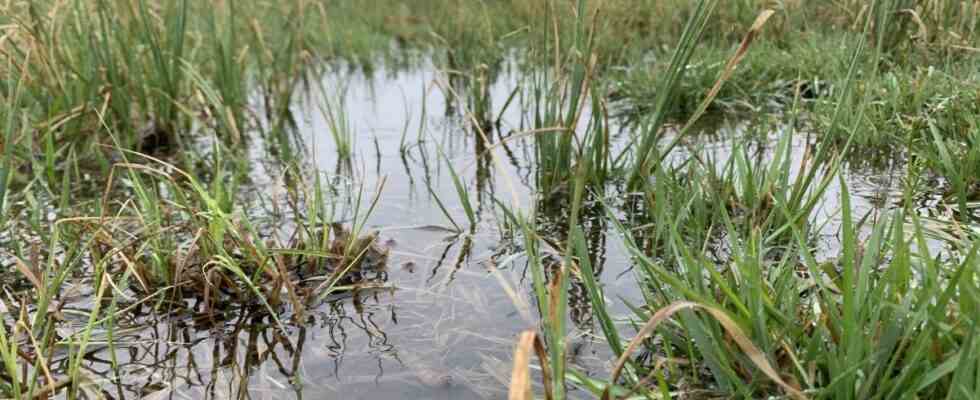Of course, it’s about protecting the Lechhausen moss and flooding it more. But it’s also about getting the moor back on the radar in the first place. Most people in Augsburg, for example, are not even aware that one of the largest fen areas in Bavaria, covering an area of almost 3000 hectares, lies directly to the east on the outskirts of the city. A year ago, the Bund Naturschutz (BN) therefore initiated an investigation into how species protection could be strengthened there and greenhouse gas emissions stopped. The result is now available, and one thing is clear for nature conservationists, but also for many farmers: further surface sealing in the form of road construction such as a planned Osttangente around Augsburg is “out of the question”.
The importance of the moors in Bavaria and internationally is often underestimated. Peatlands only cover three percent of the world’s land area, but bind about twice as much carbon as the biomass of all forests on earth put together. These dimensions make it clear why conservationists are trying to preserve the Lechhausener Moos. The city of Augsburg, for example, has set itself the climate goal of halving CO2 emissions by 2030. If the moor on the outskirts of the city were to continue to dry out and be built up as before, says local BN chairwoman Christine Kamm, Augsburg’s CO2 target would be missed by ten percent, even if all other measures worked perfectly. And the cooling effect of an upgraded moor alone would help Augsburg enormously in the expected hot summers of the coming years, says Harald Ulmer, the BN agricultural consultant.
The landscape ecologist Richard Engelschall has now been investigating the moor for almost a year. He has spotted animals that are worthy of protection, such as the lapwing, the very rare small water frog, or the blue damselfly, a rare species of dragonfly. He showed that the groundwater level is much too low for a bog and that the condition of surface water such as streams is critical. “There is a lack of water in every nook and cranny,” says the almost 50-page final report.
Landscape ecologist Richard Engelschall examined the moor.
(Photo: Florian Fuchs)
Around 300,000 tons of organic carbon are stored in the Lechhausen moss and threaten to escape if the necessary underwater saturation of the soil is still lacking. When organic material is no longer under water, it reacts with oxygen and decomposes – thus escaping carbon. The goal should be that “the moor binds carbon again,” says BN agricultural consultant Ulmer.
In addition, the study calls for water to be supplied artificially in the future, the groundwater level to be raised and the moor to be wet again through various measures. From the point of view of nature conservationists, suitable management methods are crucial. According to Ulmer, the 110,000 hectares of agriculturally used moors in Bavaria make up only four percent of the total agricultural area in the Free State – but they contribute to 25 percent of the greenhouse gas emissions in Bavarian agriculture. The study calls for more grassland in the Lechhausener Moos and extensive agriculture with less use of fertilizers, herbicides and insecticides.
From the point of view of the BN, farmers should rely on so-called paludicultures. So you should grow reeds, sedges, or canary grass to serve as building and insulating material—plants that can tolerate the wetness of a bog and thrive without chemical additives. Ulmer says that farmers are supported by subsidy programs, such as a “moor farmer program” or the conversion of arable land to permanent grassland. The farmers who were present pointed out that dry grassland does not help a moor either. “We just don’t have the water.”
According to the BN, the pressure on politicians is high, and ministries and authorities have also recognized the enormous CO2 savings potential of moors. In this respect, the Bund Naturschutz calls for an immediate halt to planning for an east ring road around Augsburg, as has been discussed for many years. But even smaller projects such as the bypass around the small town of Mühlhausen would have to be stopped. Both projects would lead directly through the fen area and irrevocably seal areas.
There are 220,000 hectares of peat soil in Bavaria, but 95 percent of it is degraded and drained. The total emissions from the Bavarian moors correspond to about six percent of the energy-related Bavarian emissions. In order to achieve the 1.5 degree target by 2050, according to the Bund Naturschutz, 50,000 hectares of moors would have to be rewetted every year.

